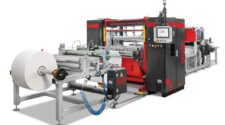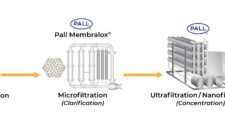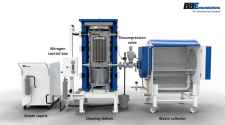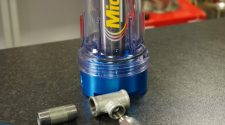The fact that the automotive industry is constantly pushing the boundaries of technical limits is also reflected in the introduction of sustainable filter solutions as a natural continuation of this drive for innovation. GESSNER’S cellulose media with plant-based resin saturation is currently used in automotive applications such as engine air, oil and fuel filters.
Their lignin saturated cellulose filter media is designed to reduce your product carbon footprint. Unlike traditional filter media, their cellulose filter media is saturated with an eco-friendly plant-based resin, ensuring that your filter element offers best performance, while taking a step into more sustainable filtration solutions.
Filtration Powered by Nature
As a natural polymer which can be found in the cell walls of plants, lignin provides structural support and rigidity. In their filter media they use it for its natural properties, offering an eco-friendly alternative to replace fossil-based resins.
Sourced as a by-product in the processing of wood, it is the perfect, sustainable alternative to phenolic resins in the saturation of cellulose media. Furthermore, the curing process generates significantly lower emissions compared to conventional methods with phenolic resins.
Highest Filter Performance
With their eco-friendly lignin saturation for cellulose filter media, GESSNER developed a more sustainable product that does not compromise filtration performance nor its mechanical properties. By maintaining the same functionality and material characteristics lignin can directly replace phenolic resins in the saturation.
With more than 35 years of experience in flame retardance GESSNER has now added a more sustainable solution for market demands. Like with phenol-based media, their new lignin saturated filter media can be equipped with a flame retardant meeting the highest industry standards.

Reduced PCF with Eco-Friendly Resin Solution
Compared to standard media, initial calculations show that with the new eco-friendly saturation the cellulose filter media offers a reduced product carbon footprint.
Furthermore, the crude oil that is saved by using a lignin modified resin can be up to 100 kg per one ton of filter material, promoting a more sustainable product lifecycle of the filter media.
Versatility in Application
The application of their lignin modified saturation is not limited to automotive – any cellulose filter media, which is currently using phenolic resins can be replaced. Whether in liquid or air filtration, their eco-friendly filter media can be easily integrated into existing filter systems, regardless of the application.
GESSNER’s lignin saturated filter media proves that sustainability and performance can indeed go hand-in-hand. By combining excellent filtration performance, a reduced carbon footprint, and fewer emissions, this filter media solution bridges the gap between high performance and sustainability. Whether in automotive or industrial applications, this eco-friendly filter media offers a seamless transition to a more sustainable filtration, helping industries meet their environmental goals without sacrificing performance.
Tailored Filtration Solutions
With a broad portfolio of filter media, pleat support and a wide range of filter components, GESSNER became a trusted partner in the filtration and separation industry. By delivering best service and high-quality filter materials into transportation, air and water filtration as well as into different industrial and life science applications. Backed by decades of experience, continuous product innovation and a global supply chain, GESSNER tailors state-of-the-art filtration solutions to the market needs and individual customer requirements.












